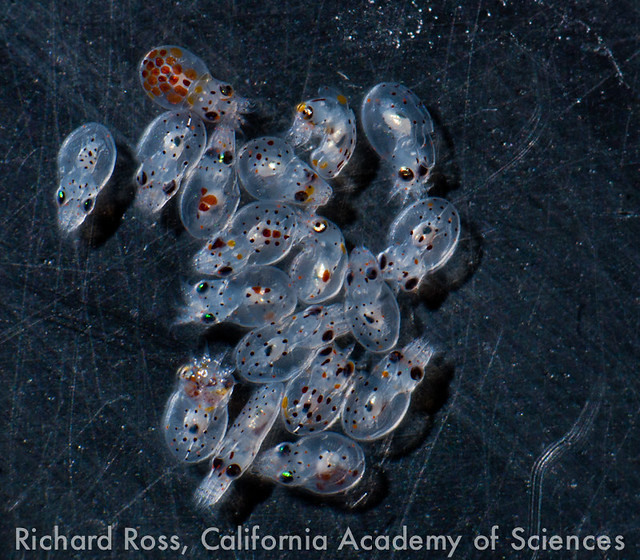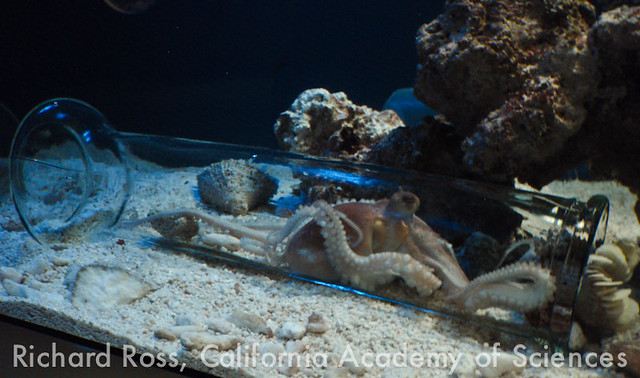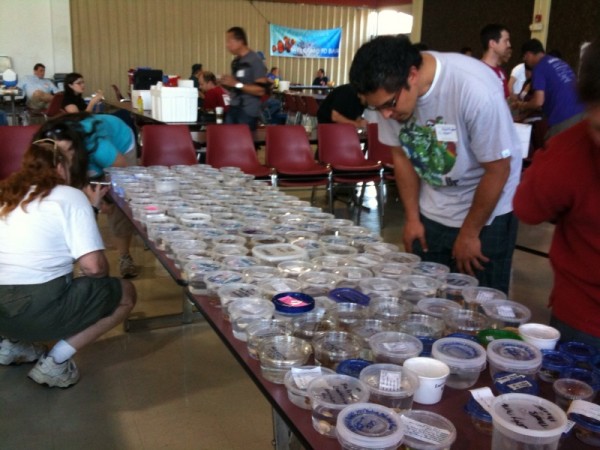a bagillion little octo’s
From TONMO and Advanced Aquarist Online blog and a bunch of other outlets
- Caribbean Octopus ‘vulgaris’ (there are several Octopus that use the species name vulgaris which is why its in quotes)
- Roughly 3 weeks between eggs being laid and eggs hatching.
- Hatching occurred at 9 am.
- When I turned off the flow to better witness the hatching, the female octopus quickly left her bottle den, agitated the eggs presumably to help the hatch, and is now sadly protecting the space where the eggs were.
- The female many hatchlings will be on display at the Steinhart Aquarium in the California Academy of Sciences until they can no longer be displayed.
- The hatchlings are 1-2 mm in length.
- There are 1000’s of them.
- The hatchings are in a Kreisel tank and being offered 24 hour Artemia, which the literature suggests is the correct size to be eaten by the little octos, along with rotifers which are smaller to cover all the bases we can reasonably cover.
- A previous batch of hatchlings from my home had individual paralarvae survive until day 9
- The Caribbean Octopus ‘vulgaris’ seems to be a smaller species than its larger Mediterranean Octopus vulgaris cousins
Some pics –



